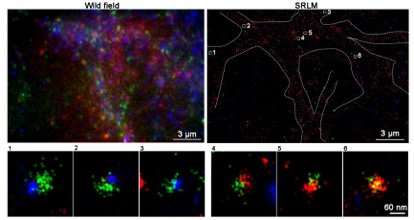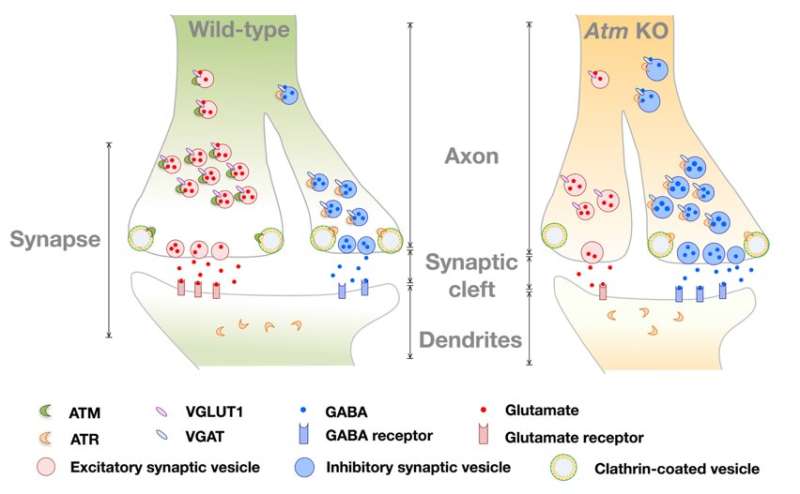Researchers reveal new insights into motor control brain processes

As with all things in life, healthy brain function depends on a balance of forces. We think of our brains as active, mobilizing limbs and body parts. But it is just as important for brains to stop these actions.
In a recent study, an interdisciplinary team of scientists from The Hong Kong University of Science and Technology (HKUST) and the Chinese University of Hong Kong (CUHK) have discovered that two large protein kinases, ATM and ATR, cooperate to establish the go/stop balance. The findings were published in the Journal Proceedings of the National Academy of Sciences.
"Our discovery offers a fresh perspective on how our brain balances excitation and inhibition," said Aifang Cheng, first author of the paper. "We show that ATM and ATR regulate each other's levels in the brain. When ATM levels drop, ATR levels increase and the reverse. Just as important, regular brain activity also changes the levels of the two proteins. This means that neuronal activity and the two kinases are in a dynamic 'conversation' that helps to keep the appropriate balance between excitation and inhibition (known as the E/I balance) by adjusting the levels of ATM and ATR."
Just as important, the team found that the two proteins divide up responsibilities for the 'go' and 'stop' functions. ATM helps regulate only excitatory events while ATR helps regulate only the inhibitory ones; this is achieved by controlling the movement of tiny synaptic vesicles in the neuronal synapse—the gap between two neurons that regulates information flow in the brain.

Using super-resolution microscopy, the researchers were able to view the cellular location of the two kinases at ultra-high magnification. The microscope's active stage locking provided the stability needed to obtain high-resolution images. The groups had previously worked together to show that ATM was found on synaptic vesicles, but no one had ever looked for ATR. Combining their efforts for a second time, the team was able to show that ATR was also on synaptic vesicles (identified with a protein called VAMP2).
"One of the challenges we faced was that even at high magnification, all vesicles look pretty much alike," said Du Shengwang, physics professor and associate director of SRIC. "To provide differentiation, we developed a three-color version of our super-resolution system, which allowed the team to prove that ATM and ATR were never found on the same VAMP2-containing synaptic vesicle."
The HKUST team then sent their findings to their collaborators at CUHK, where they produced crisp, high-resolution images of normal synapses and synapses from neurons that had no ATM protein. This allowed Cheng to measure the size of the synaptic vesicles, and she discovered that the vesicles without ATM were bigger than normal, a hint that there was a problem with the composition of the synaptic membrane.
"The new findings are in the realm of basic research, but they have important implications for human disease," said Karl Herrup, the senior author of the manuscript. "Epilepsy, for example, is a condition where one of the problems is that inhibition fails. As our findings would predict, humans with too little ATR have a problem with epilepsy, while people with ATM deficiency by contrast are ataxic—a reduced ability to make finely controlled movements and keep the proper E/I ratio. This means that there is a yin-yang relationship between ATM and ATR. And really, this is only the beginning. We believe that our work has potential relevance to a much broader range of neurologic conditions."
More information: Aifang Cheng et al, ATM and ATR play complementary roles in the behavior of excitatory and inhibitory vesicle populations, Proceedings of the National Academy of Sciences (2017). DOI: 10.1073/pnas.1716892115


















